BringingtheDreamof HomeownershipWithinReach





America boasts the world’s leading 5G networks, covering more than 320 million Americans and counting. These networks are an economic engine, enabling new services, companies, and applications and transforming industries such as healthcare, energy, transportation, logistics, and education. The resulting 5G Economy will create 4.5 million new jobs and generate $1.5 trillion in economic growth during this decade, according to Boston Consulting Group.
CTIA is proud to support the Ripon Society.

4 Bringing the Dream of Homeownership Back Within Reach
By Mike LeeTo address rising prices and a record shortage of over 20 million homes, the senior Senator from Utah has put forward a novel solution -- build more homes on federal land.
6 Standing Up to the Chinese Communist Party’s Aggressive Tactics
By Dan NewhouseThe CCP has a long history of aggression towards any nation that impedes their quest for supremacy. To remain competitive, it is crucial our nation stands united and pursues practical solutions.
8 Rebuilding Our Supply Chain
By Dusty JohnsonFrom cargo ships to planes, semi-trucks to trains, the pandemic brought the cracks in our supply chain to the surface. Congress must continue working to get things back on track.
10 Is the U.S. Tax System Rigged in Favor of the Rich?
By Daniel BunnThe U.S. tax system is highly progressive. But if policymakers continue to double down on this progressivity while ignoring our nation’s debt, it could come at a cost to the American economy.
Cover Story
12 Things are Different Downtown
By Joel KotkinWe are entering a new urban epoch, with the potential to disrupt city life in ways not unlike that created in the shift from an industrial to what has become the “transactional city.”
The Ripon Society
Editor Lou ZickarEditor
Conzelman, PresidentCover Story (cont’d)
15 An All-Hands-On-Deck Approach to End Homelessness
By Andy BarrCongress has a decision to make. Will we change the way we distribute funds to fight homelessness, or will we continue to reward providers based on an ideological philosophy?
16 From Broken Windows to Jumping Turnstiles
By Dorothy Moses SchulzWith violent crime spiking in America’s cities, cracking down on people who evade fares is a necessary step to increasing safety on mass transit systems.
Debate: Eric Adams’ Plan to Hospitalize the Homeless
18 For Those with Serious Mental Illness, It is Compassionate to Get Them Off the Streets
By Lisa DaileyWe must safeguard our civil liberties, but we also must not forget about the right of an ill person who relies on society’s conscience and protection to survive a treatable illness.
19 Without Affordable Housing and Services, the Mentally Ill will End Up Back on the Streets
By Deborah DeSantisMayor Adams should promote solutions that center on people, focus on connecting short-term interventions to long-term housing solutions, and promote pathways to economic mobility.
At Constellation, we are dedicated to lifting up our communities. We volunteer our time and commit resources to build a future in which all of our customers, employees, business partners, and communities benefit equitably from social, environmental and economic progress. We are energized by these experiences and inspired to help everyone succeed. Together we can be a catalyst for positive change in communities across America.



That’s why Constellation is proud to support the Ripon Society. constellationenergy.com

At Constellation, we are dedicated to lifting up our communities. We volunteer our time and commit resources to build a future in which all of our customers, employees, business partners, and communities benefit equitably from social, environmental and economic progress. We are energized by these experiences and inspired to help

U.S. Senators:
Shelley Moore Capito – Senate Co-Chair
Todd Young – Senate Co-Chair
Marsha Blackburn
Bill Cassidy, M.D.
Susan M. Collins
Steve Daines
Joni Ernst
Deb Fischer
John Hoeven
Jerry Moran
Mike Rounds
Thom Tillis
Roger Wicker
U.S. Representatives:
Larry Bucshon, M.D. – House Co-Chair
Frank Lucas – House Co-Chair
Mike Kelly – Vice Chair
Dan Newhouse – Vice Chair
Ann Wagner – Vice Chair
Mark Amodei
Kelly Armstrong
Don Bacon
Troy Balderson
Andy Barr
Stephanie Bice
Mike Bost
Vern Buchanan
Michael C. Burgess, M.D.
Ken Calvert
Mike Carey
Buddy Carter
Tom Cole
John Curtis
Tom Emmer
Ron Estes
Brian Fitzpatrick
Randy Feenstra
Andrew Garbarino
Kay Granger
Garret Graves
Sam Graves
French Hill
Bill Huizenga
Bill Johnson
Dusty Johnson
Dave Joyce
John Joyce, M.D.
Young Kim
Darin LaHood
Bob Latta
Julia Letlow
Nancy Mace
Brian Mast
Kevin McCarthy
Michael McCaul
Carol Miller
John Moolenaar
Blake Moore
Jay Obernolte
August Pfluger
Guy Reschenthaler
Cathy McMorris Rodgers
Steve Scalise
Adrian Smith
Lloyd Smucker
Pete Stauber
Bryan Steil
Glenn “GT” Thompson
Mike Turner
David Valadao
Brad Wenstrup, D.P.M.
Steve Womack
With violent crime continuing to escalate and office occupancy rates not yet returning to pre-pandemic levels, the latest edition of The Ripon Forum examines the future of American cities in the wake of COVID-19 and the fact that — from the number of people on the street to the number of businesses that have been forced to close — things look different downtown.
“We are entering a new urban epoch,” writes Joel Kotkin in the lead essay for the Forum, “with the potential to disrupt city life in ways not unlike that created in the shift from an industrial to what Jean Gottman described in 1983 as the ‘transactional city.’” Kotkin is an author and presidential fellow who serves as executive director of the Urban Reform Institute. In his essay, he points out that while COVID helped fuel these changes, the reality is that they have been a long time coming.
“Migration to dense cities, already a small share of all moves, started to decline as early as 2015. But it accelerated during the pandemic,” he writes. “The pandemic clearly accelerated a devastating rise in crime and lawlessness … In some parts of Chicago and Philadelphia, young men now have a greater chance of being killed by firearms than the American soldiers who served during the wars in Afghanistan and Iraq.” Calling these developments “a mounting crisis for urban governance,” Kotkin says that cities need to change — and the changes need to start at the top. “Clearly, current urban leadership needs to change,” he writes. “The key challenge lies with restoring or at least maintaining the stable middle or working class constituencies that elected the last crop of effective reformers.”
Another challenge that must be addressed as part of any urban turnaround is homelessness. According to U.S. Rep. Andy Barr, addressing this challenge will require not only an “all-hands-on-deck” approach, but a recognition that the current U.S. policy to end homelessness called Housing First has failed. “Housing First has failed because it prevents providers who require wraparound services from receiving federal funds to curb homelessness in our communities,” Barr writes. “These wraparound services are oftentimes necessary to ensuring a person can safely and fully attain permanent housing on their own. We need to abandon HUD’s exclusive reliance on Housing First in order to truly help those in our communities. We need an all-hands-on-deck approach to reduce homelessness.”
According to professor and retired police captain Dorothy Moses Schulz, cities also need to address the lawlessness on mass transit systems. “The United States has more violent attacks on transit systems than any other economically advanced nation in the world,” she writes. “Many of these attacks are committed by ‘non-destination riders’ [who] enter stations and board trains without paying fares, often jumping turnstiles in front of transit officials who are effectively powerless to stop them because city officials have decided fare evasion is no longer a crime. Minor crimes such as trespassing and vandalism are also not being prosecuted.” Preventing these minor crimes, Schulz advises, is a good way of preventing more serious offenses, and an approach that has been proven to work. “Cracking down on people who evade fares and jump turnstiles is a necessary step,” she writes. “Some might argue it is the 2023 equivalent of ‘Broken Windows,’ the approach to policing that helped reduce violent crime in New York City in the 1990s and is based around a very simple and powerful premise — namely, stopping minor crimes prevents major lawlessness.”
In other essays, U.S. Sen. Mike Lee discusses the innovative plan he has authored to bring the dream of homeownership back within reach by building more homes on federal land. U.S. Rep. Dan Newhouse discusses his role as a member of the House Select Committee on China and the importance of countering the Chinese threat. U.S. Rep. Dusty Johnson provides an update on the effort he is leading to strengthen America’s supply chain. With another tax day upon us, Daniel Bunn of the Tax Foundation examines the progressivity of America’s tax system.
In our debate feature, Lisa Dailey of the Treatment Advocacy Center and Deborah DeSantis of the Corporation for Supportive Housing provide two views of the plan put forth by New York City Mayor Eric Adams to hospitalize mentally ill homeless individuals without their consent. And in our latest Ripon Profile, U.S. Rep. Nicole Malliotakis discusses, among other topics, how being the daughter of immigrants shapes her approach to public service.
As always, we hope you enjoy this latest edition of The Ripon Forum, and encourage you to contact us with any questions or comments you may have.
Lou Zickar. Editor of The Ripon Forum louzickar@riponsociety.orgResentment is growing amongst America’s youth. Many feel the meteoric rise in home prices has rendered their prospect of homeownership unattainable. As they come of age, they find themselves captives of a capricious rental market. At a time they envisioned buying a home and starting a family, they’re seeking roommates or living with parents.
Their plight isn’t imaginary or wholly self-inflicted. The U.S. has a record shortage of over 20 million homes. As a result, home prices have reached an all-time high, and wages haven’t kept pace. Coupled with the runaway inflation brought on by excessive deficit spending, young Americans are struggling to keep a roof over their heads.
Unfortunately, finding available land for housing is a challenge, especially in the West. Take my home state of Utah, where two-thirds of our land is owned or controlled by the federal government. If you highlight the federal land in Utah, you’ll see that we exist on small private islands in vast oceans of federal land.
To bring the dream of homeownership back within reach, I’ve introduced the Helping Open Underutilized Space to Ensure Shelter (HOUSES) Act, which would make some of this federal land available to address housing shortages and affordability. It does so by creating a new authority under the Federal Land Policy and Management Act (FLPMA), which would allow a state or a unit of local government to nominate a tract of land within the Bureau of Land Management’s (BLM) jurisdiction to be transferred for housing.
1) Committee, U. S. J. E. (2022, August 4). The houses act: Addressing the national housing shortage by building on federal land. The HOUSES Act: Addressing the National Housing Shortage by Building on Federal Land - The HOUSES Act: Addressing the National Housing Shortage by Building on Federal Land - United States Joint Economic Committee. Retrieved April 3, 2023, from https://www.jec.senate.gov/ public/index.cfm/republicans/analysis?id=E33DF6B6-3E2A-4985B706-CCA9677BD38E
Freeing up this federal land has massive potential to alleviate America’s housing crisis. The Joint Economic Committee estimates that the HOUSES Act would lead to the construction of 2.7 million more homes in the United States, alleviating 14 percent of the nation’s housing shortage.1 And it would only transfer 0.1 percent of the 640 million acres of federal land to states and localities for housing development.
The JEC estimates that the HOUSES Act could fill all or nearly all of the housing shortage in Arizona (100%), Nevada (100%), Wyoming (100%), Idaho (95%), Alaska (85%), and New Mexico (85%). This bill could also fill a substantial share of the housing shortage in Montana (73%), Oregon (69%), Utah (35%), California (27%), Colorado (22%), and Washington (9%).
The federal government’s hoard of public land limits the available space where people can put down roots and build communities, churches, businesses, etc. Most federally owned land remains barren and unused. The land is not living up to its full potential, but it could be if it were available to people with a vested interest in seeing the areas thrive.
And building more homes doesn’t have to come at the expense of our premier public lands. Like many states in the West, Utahns love the land and want to ensure their children can visit and enjoy these national treasures.
My proposal would preclude using land to build homes in national parks, monuments, wilderness areas, and other congressionally conserved lands. It includes safeguards to ensure that the land isn’t used for vast estates or large commercial enterprises but incorporates enough flexibility to accommodate the local community’s needs, such as roads, utilities, schools, places of worship, grocery stores, parks, and health clinics.
This isn’t a crisis we can ignore. America needs homes and the space to build them. The federal government is pushing the American dream further out of reach by hoarding vast expanses of public lands. My proposal can ease our housing crisis without adding a penny to the deficit.
Though sound advice, we owe the next generation more than a lecture against purchasing too many oat milk lattes and avocado toasts. We must bring down the cost of homes to ensure an entire generation doesn’t fail to launch. By enacting my legislation, we can bring the American dream of home ownership back within reach for millions. RF
Mike Lee serves as the senior U.S. Senator from Utah.
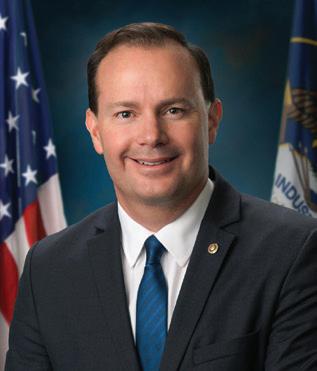
The U.S. has a record shortage of over 20 million homes. As a result, home prices have reached an all-time high, and wages haven’t kept pace.

The Chinese Communist Party (CCP) poses one of the greatest geopolitical threats of our time, and their actions have only become more brazen over the years.
The CCP is deliberately buying up farmland in the United States threatening our national and food security. In the midst of the COVID-19 pandemic, the CCP obscured the origins of the virus, resulting in its worldwide spread and millions of unnecessary deaths.
They enable the production of lethal fentanyl-precursor chemicals by bad actors, which are sold to Mexican cartels and smuggled across our southern border, killing our neighbors. The regime sends surveillance balloons to monitor our citizens in their own backyards and spy on strategic military sites, then proceeds to lie about it.
We know that they commit genocide against the Uyghur people and intimidate the sovereign nation of Taiwan, all while ignoring international norms. Simply put, the CCP is a hostile authoritarian regime that poses a significant threat to the free world and must be taken seriously.
The CCP has a long history of aggression towards any nation that impedes their quest for supremacy. To remain competitive in the global marketplace, it is crucial our nation stands united and pursues practical solutions. This Congress, I was appointed to serve on the bipartisan House Select Committee on Strategic Competition between the United States and the Chinese Communist Party. We have been holding hearings with witnesses to understand the nature of the threats from the CCP so
we can counter their path towards global dominance.
The Select Committee will concentrate on restoring U.S. economic independence in key areas and exposing the CCP’s coordinated strategy of undermining American leadership. In this committee, cooperation is crucial, and confronting the regime will necessitate the country speaking with one voice against their harmful activities. Partisanship has no place in this mission – the CCP poses a threat too significant for any single political party to tackle alone.
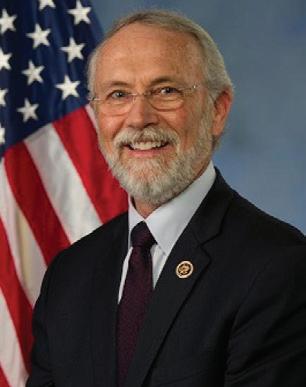
The United States is engaged in a great power struggle with a regime that is notoriously opaque in nature and comfortable with extreme, aggressive action. It is vital we come together as a nation and respond with tough policies to stand up for human rights, protect our values both economically and militarily, and safeguard American sovereignty.
During the first hearing of the Select Committee, we explored the ongoing threat posed by the CCP to our security, economy, and values. Lieutenant General H.R. McMaster, the former United States National Security Advisor, and Ms. Tong Yi, a Chinese human rights advocate, along with other policy experts, testified before our members. The testimony of Lieutenant General McMaster highlighted the extreme threat the purchase of American farmland near U.S. strategic and military sites poses to our nation – an issue I aim to address through the passage of my legislation, the Prohibition of Agricultural Land for the People’s Republic of China Act . Ms. Yi also shared information on the “White Paper” protests, a movement initiated to challenge the CCP’s “zero-COVID” policy that led to
The CCP has a long history of aggression towards any nation that impedes their quest for supremacy.
the detention of thousands of Chinese citizens.
During our most recent hearing, Ms. Gulbahar Haitiwaji and Ms. Qelbinur Sidik, Uyghur concentration camp survivors and witnesses to the atrocities perpetrated by the CCP in the Xinjiang province, provided testimony to our members. These courageous women recounted stories of abject horror, including mass sterilization and forced labor camps, all at the hands of the CCP. Additionally, Ms. Naomi Kikoler, director of the Simon-Skjodt Center for the Prevention of Genocide at the U.S. Holocaust Memorial Museum; Elisha Wiesel, Chairman of the Elie Wiesel Foundation for Humanity; and other esteemed guests warned our Committee about the dangerous path the CCP is following with the Uyghur genocide and provided us with valuable historical context. The atrocities unfolding before our eyes cannot be allowed to
continue unchecked.

The United States has always been a beacon of hope and freedom for all, and the CCP does not share this sentiment. Their calculated and harmful aggression towards the free world threatens our democracy, making it more important than ever to safeguard against them. The Select Committee is an excellent first step in countering the CCP antagonism, but there is still work to be done. This regime has gone unchallenged for too long, and it is past time for us to unite and stand up for freedom, as this is a threat that affects us all. RF
Dan Newhouse represents the 4th District of Washington in the U.S. House of Representatives and is a member of the House Select Committee on Strategic Competition between the U.S. and the Chinese Communist Party.
International Paper is proud to support The Ripon Society.


To remain competitive in the global marketplace, it is crucial our nation stands united and pursues practical solutions.
As we celebrate our 125 anniversary, we’re meeting today’s needs for renewable, fiber-based packaging and pulp while sharpening our focus on the future. International Paper – here for what’s now and creating what’s next.
The pandemic seemingly brought the cracks in our supply chain to the surface. From cargo ships to planes, semi-trucks to trains, it seems we have hit roadblock after roadblock the last few years. It’s time to get our supply chain on the right track — literally.
As a Representative from an agriculture dominated state, the flaws in our system became extremely apparent in the food processing space and ocean shipping industry at the end of 2020. We all witnessed the unprecedented number of cargo ships clogged at American ports from California to Florida. South Dakota dairy was sitting at ports waiting to be shipped overseas for months – eventually rotting – because foreign-flagged ocean carriers were prioritizing Chinese electronics over American food exports.
These unfair shipping trade practices got so bad, it resulted in billions of dollars in losses to American food producers. Someone had to step in. I found a partner in a Democrat from California, Representative John Garamendi, and we got to work on the Ocean Shipping Reform Act.
Our bipartisan bill, now law, was the strongest fix to our maritime laws in a generation. The Ocean Shipping Reform Act strengthened the authority of the Federal Maritime Commission (FMC) by providing it with new tools to help level the playing field for American exporters and counteract anticompetitive behavior. It allows the FMC to more efficiently resolve disputes between ocean carriers and shippers, while also taking actions at the U.S. Department of Transportation to alleviate
strain across the supply chain.
The bill has evidently eased supply chain pressures by addressing unfair ocean carrier practices, speeding up the resolution of disputes over carrier fees, and improving the movement of goods at our nation’s ports. But there’s more we can do.
I’m working on a number of additional proposals to further strengthen our supply chain.
First, I want to do more to solidify America’s supply chain. That’s why in March, Representative Garamendi and I introduced the Ocean Shipping Reform Implementation Act, or OSRA 2.0 as I like to call it. Our bill builds on the progress of its predecessor and further cracks down on the Chinese Communist Party’s attempt to disrupt and influence America’s supply chain.
OSRA 2.0 prohibits U.S. ports from using Chinese statesponsored shipping software, allows the FMC to investigate foreign shipping exchanges like the Shanghai Shipping Exchange to preempt improper business practices, and authorizes the FMC to streamline data standards for maritime freight logistics.
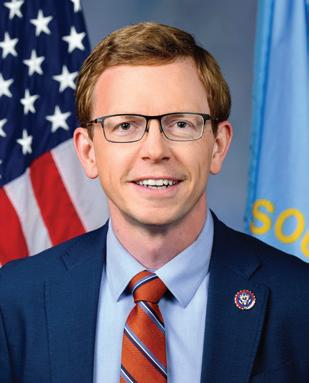
Many of our supply chain woes are a result of dependency on China and a lack of accountability towards their improper business practices. OSRA 2.0 corrects that.
We know the areas of our supply chain that need improvement—Congress should act now rather than wait until the next crisis arises. American consumers and businesses need stability. While congestion levels at U.S. ports have significantly declined, businesses
The Ocean Shipping Reform Act strengthened the authority of the Federal Maritime Commission by providing it with new tools to help level the playing field for American exporters.
continue to face domestic shipping delays. I want to solve our domestic problems, too.
That’s why I introduced the SHIP IT Act, which includes a number of initiatives that would help add fluidity to the movement of freight in America. My bill would strengthen our supply chain by increasing shipping capacity, lessening the burdens on current and future truck drivers. Specifically, it would modernize the authority for certain vehicle waivers during emergencies, allowing waivers in response to disease and supply chain emergencies. It would also provide incentives to recruit and retain drivers by allowing truck drivers to apply for workforce Innovation and
Opportunity Act grants and would create targeted and temporary tax credits for new truck drivers.

The SHIP IT Act would also increase truck weight allowing for increased shipping capacity across the United States.
There is a menu of solutions to our nation’s supply chain issues. Congress should take a serious look at solving these problems before they turn into a crisis. I’ll continue to push for these important solutions. RF

OSRA 2.0 builds on the progress of it’s predecessor and further cracks down on the Chinese Communist Party’s attempt to disrupt and influence America’s supply chain.
Is the U.S. tax system rigged in favor of the rich?
That’s the belief of many Americans today, but the data suggests otherwise. The U.S. tax and transfer system is highly progressive and redistributive. But if policymakers continue to double down on this progressivity while ignoring our nation’s debt, it could come at a cost to the American economy.
There are many ways to measure this, but the most thorough is the “effective fiscal incidence rate” — the amount of tax a person bears (directly and indirectly) relative to their comprehensive income (including government transfers). Government transfers — which include things like Social Security and Medicaid — make up 59 percent of the bottom quintile’s income; excluding transfers when looking at our tax code vastly understates the progressivity of our fiscal system.
But even before accounting for government transfers, the combined federal, state, and local tax system is progressive. In 2019, the top quintile of households paid 34.5 percent, while the middle and bottom quintiles paid 24.7 percent and 24.6 percent, respectively.
wages, and less innovation. And progressive taxes lower the returns to education, investment, entrepreneurialism, and risk-taking. Lower levels of these activities harm not just individuals, but the broader economy.
Unfortunately, this hasn’t tempered proposals to make the U.S. tax system even more progressive. At the state level, seven states have introduced legislation to enact wealth taxes targeting net worth, capital gains, and estates. These, as Tax Foundation’s Jared Walczak puts it, “are economically destructive, their base is almost impossible to measure accurately, and they create perverse incentives and promote costly avoidance strategies. Very few taxpayers would remit wealth taxes — but many more would pay the price.”
Daniel BunnWhen transfers are included, the system becomes substantially more progressive: the top quintile’s rate jumps to 41.4 percent, while the middle and bottom quintiles drop to 22.4 percent and 10.1 percent, respectively. All told, the transfer system redistributed $1.7 trillion from the top two quintiles to the bottom three in 2019. This is not a system that benefits the rich at the expense of the poor.
While this sounds “fair” on paper, keep in mind that progressivity comes at a cost. Research finds a negative relationship between taxes and growth, with a more pronounced effect for progressive taxes.

Why? Because people respond to incentives. On the margin, higher taxes on corporations and shareholders reduce the incentives to invest, which means fewer workers, lower
And at the federal level, President Biden’s recently released budget would add almost $4.8 trillion in new taxes over the next decade, targeted at high-income individuals and businesses. Though these policies are aimed at the rich, they’ll impact everybody. These changes would reduce long-run GDP, shrink wages, and eliminate 335,000 jobs, according to Tax Foundation research.
But just as bad tax policy can hurt the economy, the tax system can be a lever policymakers can use to boost investment, create better jobs, raise incomes, and improve standards of living.
Take the 2017 Tax Cuts and Jobs Act (TCJA), which overhauled the federal tax code with pro-growth reforms. It significantly lowered average individual income tax rates for all income groups and decreased the cost of capital for businesses. This was a step in the right direction.
The problem: some of TCJA’s policies are temporary. The individual income tax provisions will sunset at the end of 2025, and important business policies — like 100 percent bonus depreciation — are already phasing out.
If TCJA’s temporary provisions expire, so will the economic benefits they produce; they need time to maximize
In 2019, the top quintile of households paid 34.5 percent, while the middle and bottom quintiles paid 24.7 percent and 24.6 percent, respectively.
their growth-inducing potential. For example, in 2018 the Tax Foundation estimated that if the individual income tax provisions are extended, long-run GDP would increase by 2.2 percent, long-run wages would rise by .9 percent, and 1.5 million jobs would be added. And in 2022, we estimated that making 100 percent bonus depreciation permanent would increase long-run GDP, bump longrun wages, and add tens of thousands of jobs.
This year, revenue as a percentage of GDP exceeded its 50-year average by .9 percentage points. But it didn’t make a dent because spending also exceeded its 50-year average — by 3.6 percentage points. Spending growth, driven mostly by entitlements and interest on the debt, will continue to outpace revenue growth over the next decade unless something changes.
Making these TCJA provisions permanent would have significant benefits, but these too come with a trade-off: less government revenue and larger federal deficits. While a bigger, more prosperous economy would generate more revenue and partially offset the initial deficit increase, there would still be a shortfall.
President Biden’s recently released budget would add almost $4.8 trillion in new taxes over the next decade, targeted at high-income individuals and businesses … These changes would reduce long-run GDP, shrink wages, and eliminate 335,000 jobs.
We can’t tax our way out of this problem, but prioritizing growth over progressivity gives us a better chance. Making responsible spending reforms and pursuing pro-growth tax policies will put us on the path to fiscal sustainability. RF
A second approach to examining the burden of a tax system is to consider effective fiscal incidence rates on market-derived income. Effective fiscal incidence rates illustrate the estimated tax burden as a share of comprehensive income. Market-derived income includes all earned income from active participation in a job or business venture as well as all passive income resulting from the receipt of dividends, interest, or rent and excludes public or private transfers. FIGURE 2.
The crux of the issue, however, is not revenue; it’s spending.
The future of cities in the wake of COVID-19
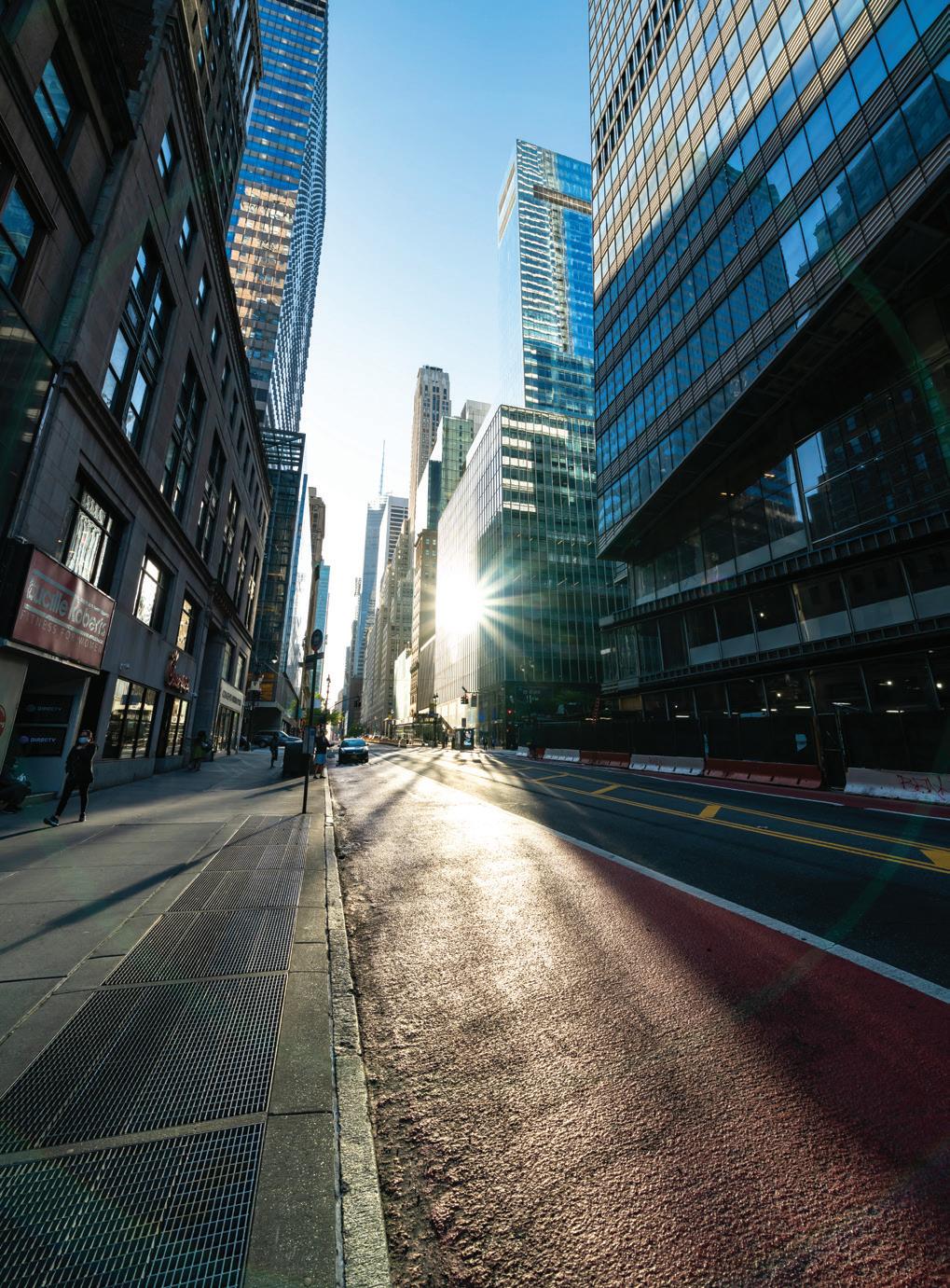 by JOEL KOTKIN
by JOEL KOTKIN
We are entering a new urban epoch, with the potential to disrupt city life in ways not unlike that created in the shift from an industrial to what Jean Gottman described in 1983 as the “ transactional city.” Based on finance, high-end business services and information technology, transactional cities were defined not by production and trade in physical goods, but by intangible products concocted in soaring office towers.
For years, academic researchers, both on the Left and Right, envisioned a high-tech economic future dominated by dense urban areas. Yet when viewed through the lens of migration and employment, London, New York, San Francisco, Chicago, and Los Angeles have all been suffering relative declines for at least the last decade. The ultra-tall towers that once symbolized urban greatness are now as anachronistic as the Cathedrals of the Middle Ages. Office occupancy has been declining since the turn of the century, while construction of new space has also fallen. In 2019, before the pandemic, construction was one-third the rate of 1985 and half that of 2000.
More serious still has been the movement of people. Migration to dense cities, already a small share of all moves, started to decline as early as 2015. But it accelerated during the pandemic. Dense centers — what historian William McNeil described as the “ confluence of the civilized disease pools” — have historically suffered the worst during pandemics. Ancient Rome did, as did the great cities of the Renaissance, the Islamic Caliphate, and China. During the COVID-19 pandemic, the dense urban centers of today met the same fate, suffering generally the worst fatality rates.
The pandemic clearly accelerated a devastating rise in crime and lawlessness, perhaps most notably in London, Paris, Washington, New York, Los Angeles, San Francisco, Philadelphia and Chicago. In some parts of Chicago and Philadelphia, young
men now have a greater chance of being killed by firearms than the American soldiers who served during the wars in Afghanistan and Iraq.
Yet it is misleading to blame this on the pandemic alone. Indeed, despite the pre-COVID talk of people moving “ back-to-the-city,” suburbs have accounted for about 90% of all metropolitan growth in the United States since 2010, gaining 2 million net domestic migrants, while the urban core counties lost 2.7 million. This process is likely to be impacted over the long term as more workers choose to work at home, at least two to three days a week. Stanford economist Nicholas Bloom has suggested that even after the pandemic, remote workers will constitute at least 20 percent of the workforce, more than three times the pre-pandemic rate.
All this accentuates a mounting crisis for urban governance. Even before the pandemic the transactional city had undermined the middle and working class as costs rose, schools deteriorated, and regulation flourished. Cities like New York, London, and Paris may continue to attract the ultra-rich who buy properties there, even if they live there only intermittently. But they are steadily losing the middle class.

Not surprisingly, these cities tend to have among the worst inequality of any geographic area, an urban model very different than the Jane Jacobs’ conception of a city that does not “ lure the middle class” but “ creates one”. Indeed, as the transactional city reached its apogee, the opportunity horizon for working- and middle-class families dimmed. In 1970, half of the city of Chicago was middle class; today, according to a 2019 University of Illinois study, that number is down to 16 percent. Meanwhile the percentage of poor people has risen from 42 to 62 percent
The question now is how do cities survive? In New York, city leaders realize that the era shaped by the office tower is coming to an end and plan to convert many of these buildings into housing. But this may be of only limited utility. According to
Migration to dense cities, already a small share of all moves, started to decline as early as 2015. But it accelerated during the pandemic.Joel Kotkin
one recent estimate, barely 20 million of the city’s 420 million square feet of office space is suitable for conversion, despite this being much desired by the building’s desperate owners. In another less promising sign, both New York and Chicago plan to build large casinos — the kind of Hail Mary pass that has rarely delivered solid economic results.

Just as critical will be addressing the fundamental issues relating to governance. This will require a greater emphasis on dispersed neighborhoods, some still doing well as work disperses. It will also require shifting away from the progressive agenda that has made so many cities unlivable, from bans on energy sources such as natural gas, to a refusal to crack down on crime, to the usually miserable state of urban public education. Communities might be housed in neighborhoods, but the people in them need to have a reason to want to keep living there, particularly if they have children.
Clearly, current urban leadership needs to change. The key challenge lies with restoring or at least maintaining the stable middle or working class constituencies that elected the last crop of effective reformers — Rudy Giuliani in New York, Ed Rendell in Philadelphia, Bob Lanier in Houston or Richard Riordan in Los Angeles. Powerful public employee political machines, daft
billionaires, and highly radicalized lobbies all stand in the way of a real turnaround.
To survive and thrive in the “ city of bits” era, urban areas will have to compete for residents and businesses, not for economic necessity but as a choice. Critically, cities must be places chosen by the rash of grassroots startups and keep some middle class families from leaving. In recent years, large cities have become increasingly childless. The number of babies born in Manhattan this decade dropped nearly 15 percent. Already home to a majority of single households, the nation’s premier urban center could see its infant population cut in half in 30 years.
To be successful in the future, cities can only compete by providing a more dynamic, vital alternative to the periphery or small towns. In the “ city of bits” era, success depends on tapping the skills and entrepreneurial penchant of its denizens. Cities need to grow not by becoming greater or more grandiose, but by offering a better, safer, and exciting urban experience, a more people-friendly metropolis. RF
Clearly, current urban leadership needs to change. The key challenge lies with restoring or at least maintaining the stable middle or working class constituencies that elected the last crop of effective reformers.
“Ideas that matter, since 1965.“
Ten years ago, the Obama Administration announced that its Housing First strategy would end homelessness by 2023. Over the decade since, the singular approach to solving homelessness would prove to be a disaster.
According to a recent U.S. Department of Housing and Urban Development (HUD) study, the U.S. saw a 20% increase in America’s unsheltered homeless population from 2014-2019. California, the only state in the nation to follow the Obama Administration’s lead in 2016 to fully adopt the Housing First model, saw its homeless population surge by 50% before the pandemic.
Housing First has failed because it prevents providers who require wraparound services from receiving federal funds to curb homelessness in our communities. These wraparound services are oftentimes necessary to ensuring a person can safely and fully attain permanent housing on their own. We need to abandon HUD’s exclusive reliance on Housing First in order to truly help those in our communities. We need an all-hands-on-deck approach to reduce homelessness.
That’s why I’ll be reintroducing the Housing Promotes Livelihood and Ultimate Success (Housing PLUS) Act, legislation I led in the last Congress to prioritize federal funds to providers based on their record of transitioning Americans from homelessness to a path of long-term housing and selfsufficiency. This ensures we are elevating the best providers, whether they use the Housing First model, are faith-based organizations, or require participation in wraparound services such as addiction treatment or job counseling.
Specifically, my proposal would prevent the HUD Secretary from prohibiting, limiting or otherwise restricting
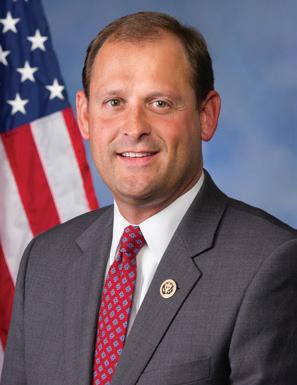
award of Continuum of Care (CoC) funds to providers because they require patients to enroll in wraparound services or because they are faith-based organizations. To ensure these providers receive access to federal funding, my bill in the last Congress also directed the HUD Secretary to allocate no less than 30% of CoC funding to recipients that provide, or facilitate access to, wraparound services.
Expanding CoC funding to include providers who require wraparound services means we will be delivering resources to providers combating the root causes of homelessness. To meaningfully address homelessness, we must invest in reducing its main causes. Take addiction and mental health counseling as an example. Over 75% percent of homeless individuals in the U.S. are struggling with addiction or mental health issues.
Requirements that the homeless engage in services and move towards self-sustainability are reasonable, and have precedent. Pell grants require students to make satisfactory academic progress, attend classes and maintain passing grades. Unemployment benefits require recipients to look for jobs. The Temporary Assistance for Needy Families program generally requires beneficiaries to work or advance their education. These mandates improve recipients’ wellbeing and their opportunities for success.
America’s crisis of homelessness isn’t stemming from a lack of resources or investments. In the ten years prior to HUD’s 2019 study on homelessness, federal spending on housing assistance increased by 200%, much of it plowed into Housing First. Yet, President Biden’s blueprint plan to address homelessness calls for a doubling in Housing First funding at the federal level.
In the months ahead, Congress has a critical decision to make. Will we engineer a U-turn on how we distribute resources to combat homelessness, or will we continue to reward providers simply on the basis of fidelity to an ideological philosophy instead of their ability to get results for the Americans they serve? RF
To meaningfully address homelessness, we must invest in reducing its main causes.
Our nation is in the middle of a crime crisis. From the dramatic increase in the number of murders to the sharp rise in the number of carjackings, Americans are increasingly feeling uneasy these days walking down the streets of many cities. Unfortunately, it’s not just city streets that are unsafe. America’s transit systems are also facing their own crime crisis.
According to a 2022 Mineta Transportation Institute study, the United States has more violent attacks on transit systems than any other economically advanced nation in the world. These attacks include stabbings, shootings, people pushed off platforms, and other random acts of violence. Even in New York, one of the few cities where there has been an increase in transit policing, violent assaults continue to occur. Recently on the same day, an elderly man was punched on a Brooklyn platform during the morning rush hour and a 38-year-old woman was punched on a Manhattan train during the evening rush hour.
Many of these attacks are committed by “non-destination riders” — homeless individuals, the mentally ill, and drug abusers who travel on transit systems for hours at a time, day-in and day-out each week. Many will enter stations and board trains without paying fares, often jumping turnstiles in front of transit officials who are effectively powerless to stop them because city officials have decided fare evasion is no longer a crime. Minor crimes such as trespassing and vandalism are also not being prosecuted and increasingly being ignored. Instead, in a number of cities, transit systems are replacing enforcement personnel with “transit ambassadors.” The job of these ambassadors is to explain riding rules and provide travel information to transit users. Incredibly,
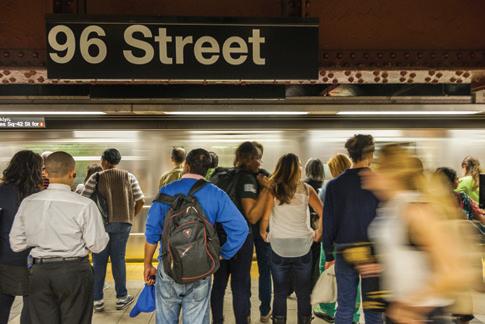
they are also required to teach fare evaders how to pay based on the naïve notion that ignorance — rather than a lack of consequence — is fueling the increase in jumping turnstiles. But numbers don’t lie. In 2017, for example, the Washington, DC Metropolitan transit authority charged more than 15,000 people for either criminal or civil fare evasion violations. The following year, in 2017, the DC City Council voted to decriminalize fare evasion. By 2019, citations and arrests had decreased almost 50 percent, to just over 7,900. Through August of last year, that number had fallen to just under 300. Is there a connection between jumping turnstiles and rising crime rates? Between 2018 and 2021, aggravated assaults increased by 85 percent in the Washington metropolitan transit system. At the same time, other types of crime like robbery and pickpocketing went down. Philadelphia had a similar experience. After decriminalizing fare evasion in 2019, the City of Brotherly Love saw assaults spike by 84 percent on its transit system over the next two years. While the link between decriminalizing fare evasion and an increase in crime cannot be firmly established, there can be no doubt that violence increased in these transit systems as enforcement became more lax.
Last March, I testified before the U.S. Senate Committee on Banking, Housing and Urban Affairs about the Infrastructure Investment and Jobs Act (IIJA) and how it might be affecting transit crime. The answer I provided was simple — the law was having no effect. While systems used some funds to underwrite social services for riders who were most likely non-payers, no money was being spent to enhance overall system security. This
According to a 2022 Mineta Transportation Institute study, the United States has more violent attacks on transit systems than any other economically advanced nation in the world.
lax approach has enabled fare evaders to take over trains, buses, stations, and waiting areas, making transit systems not only among the leading sites of crime and general disorderliness, but of fentanyl use, as well.
Indeed, fentanyl use in Denver’s Union Station resulted in two restrooms and five elevators being closed for cleansing. Yet despite rider complaints that the station was used mostly by non-riders, the Regional Transportation District — in the face of pushback from the American Civil Liberties Union and homeless advocacy groups — is currently undecided on whether to ban all-day riders and to update its code of conduct to address behavior that make commuters feel unsafe.
A similar story is playing out in Seattle. Fentanyl use is so severe in the Emerald City that buses and trains are being outfitted with detectors as part of a research program to determine how the smoke circulates toward transit drivers. Ridership has lagged about 40 percent below January 2020 figures. One downtown station lost half its patrons, which may help to explain why, according to a Business Journal analysis, Seattle lost nearly 2,400 businesses since 2020. Could the loss reflect the fear patrons feel at downtown stations, where in addition to fentanyl smokers, they face unlit tunnels, broken escalators, and fetid elevators?
Likewise, in Minneapolis/St. Paul, train operators have for years complained about drunks and drug users. In 2019, Metro Transit’s crime increased 35 percent over the previous year. More recently, a local news report found that drug use, intoxication, and overdoses occur regularly on trains and on platforms that lack fare-gates, making them easy hotspots for drug sales and use. Metro Transit blames lost riders on Covid-19 and changing commuter patterns; state legislators, deaf to requests for more police, are considering treating fare evasion like a parking ticket and having social workers assist the homeless and those experiencing mental health and substance abuse problems.
Smaller transit systems are experiencing similar problems, as well. In testimony last month about the IIJA, James Keel of the Greenville (SC) Transit Authority told the Senate

Banking, Housing and Urban Affairs Committee about a postpandemic increase in people experiencing mental illness and/ or homelessness. “We are not equipped to provide potential riders with the mental health care they may need,” he stated bluntly. Greater Cleveland Regional Transit Authority CEO India Birdsong Terry shared similar testimony, telling the Committee about community policing officers, ambassadors, and crisis intervention specialists to address “the needs of our most vulnerable customers.” She said nothing, however, about farepaying passengers most likely being made uncomfortable by those vulnerable customers, who are also, by the way, far less likely to have paid a fare.
This all may seem hardhearted. And, depending on one’s perspective, it likely is. But with violent crime spiking in America’s cities and transit systems, cracking down on people who evade fares and jump turnstiles is a necessary step. Some might argue it is the 2023 equivalent of “Broken Windows,” the approach to policing that helped reduce violent crime in New York City in the 1990s and is based around a very simple and powerful premise — namely, stopping minor crimes prevents major lawlessness.
The Washington Metropolitan Transit Authority took a step toward endorsing this approach last month when it announced that it was planning to invest $35 million to make fare gates taller. The transit authorities in Philadelphia and San Francisco have announced similar efforts. While these are good investments, investing more on transit enforcement and less on transit ambassadors must remain on the table, too. Otherwise, America’s transit systems will no longer be able to point to the pandemic or hybrid work as the reasons for their ridership losses. Instead, they will be forced to confront one of the harsh realities of today’s crime crisis — Americans no longer ride mass transit because they fear for their safety. And it is a fear that cities and mass transit authorities have helped to create. RF
I testified before the U.S. Senate Committee on Banking, Housing and Urban Affairs about the Infrastructure Investment and Jobs Act and how it might be affecting transit crime. The answer I provided was simple — the law was having no effect.Dorothy Moses Schulz Eric Adams’ Plan to Hospitalize the Homeless
I have heard all the objections raised by critics of Mayor Eric Adams’ initiative to get those living on our streets due to untreated severe mental illness into hospitals or treatment settings. The infrastructure can’t handle it. There are not enough beds. We should invest in services for those who want treatment.
What I don’t hear from these critics, however, is agreement that the way things are now is unacceptable. Inadequate infrastructure? No beds? I don’t see the people raising these arguments marching to Albany to ask for more hospitals to treat those in need of the most acute care. Invest only in voluntary services? Who then will find and engage those suffering from SMI (serious mental illness) who don’t know where or how to get help, or more likely whose psychosis prevents them from even ever seeking it? Critics of Mayor Adams’ plan certainly won’t be leading that or any other efforts to get help to those in the most dire need.
The fact is that the most vocal critics of the mayor’s initiative offer only straw arguments. What it all comes down to is opposition to involuntary treatment of any kind, and a cold-hearted decision to treat as a choice what is actually a symptom of psychosis.
ill person who relies on society’s conscience and protection to survive a treatable illness.
Lisa Dailey
I understand the civil rights concerns. Like most Americans, I believe we must conscientiously safeguard our civil rights and liberties. But in our zeal to uphold those, we must not forget about fundamental human rights – like the right of an
There comes a point when we must recognize that criticizing all proposals with no alternative plan or solution is really just an argument for letting things remain as they are. I believe that those in charge of governing are reaching the point where inaction is not an option. Public opinion is robustly behind finding a way to compassionately intervene and help people who are too ill to seek treatment to recover their lives and identities. The number of people who oppose any form of involuntary intervention is actually comparatively small, though you would not know it from the alarmist headlines. Many people have misstated Mayor Adams’ policy, characterizing it as an expansion of the law. It is not. The law in New York, as in all states, already allows for intervention when a person poses a danger to self or others. What Adam’s policy is really saying is that we should reconsider our tacit choice to intervene only with those who pose an immediate risk to others or when harm to self escalates to imminent suicidality. His policy says that we must also reach those who have become invisible within our system of care, and who are quietly dying on our streets from things like sepsis, overdose, pneumonia, or exposure.
No one is saying that it will be easy to do what
(cont’d on page 20)
We must not forget about fundamental human rights – like the right of an ill person who relies on society’s conscience and protection to survive a treatable illness.
Communities across America are struggling with how best to respond to unsheltered homelessness, especially for those who battle mental illness. Some states and cities are responding by passing bills that make sleeping on the streets or parks a criminal offense. Others are clearing encampments in the interest of public safety or are directing funding for “sanctioned encampments.” In New York City (NYC), Mayor Eric Adams and Commissioner of the NYC Department of Health and Mental Hygiene, Dr. Ashwin Vasan, recently released the city’s action plan for mental health. The plan followed up the mayor’s announcement last fall that described how the city would take steps to involuntarily institutionalize New Yorkers experiencing homelessness and exhibiting symptoms of a mental illness even if they posed no active threat of violence or harm to themselves or others.
New York City has tried similar approaches in the past without success. Homelessness soared in the city during the 1980s, mainly due to the deinstitutionalization of severely mentally ill individuals from psychiatric hospitals. Many of these individuals ended up homeless or in jail without the city making the necessary investments in housing and behavioral health services. States and cities around the country passed similar deinstitutionalization policies. Now, 40 years later, policymakers are swinging back to the 1980s despite knowing that there are better alternatives.
People experiencing homelessness in NYC accounted for 37%, nearly 47,000, of those who cycle through the emergency mental health programs. This included emergency rooms, inpatient psychiatric stays, and
mobile crisis referrals.1 These crisis response services are expensive and inefficient at providing the necessary support to address long-term housing and health needs. Individuals without housing who are placed into involuntary psychiatric holds or arrested are frequently discharged back into homelessness. With no connection to services or housing, these individuals will cycle through these systems repeatedly.
Recent research conducted in Denver, Colorado, found that this cycle costs approximately $15,100 annually per person.2 If we apply this cost to the 47,000 unsheltered homeless involved in NYC’s emergency mental health program, the taxpayers will foot a $710 million bill annually. This estimate is likely conservative since NYC services costs are predictably higher.
As the decades since the 1980s have shown, investing in and scaling short-term interventions will not reduce homelessness and certainly will not help those individuals living with severe mental illness become healthier. Funding for crisis-based responses only perpetuates the cycle of homelessness and generates high public costs.
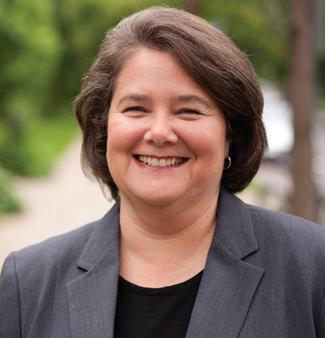
(cont’d on next page)
1) See Care, Community, Action: A Mental Health Plan for New York City. Pg. 34: https://www.nyc.gov/assets/doh/downloads/ pdf/mh/care-community-action-mental-health-plan.pdf
2) See Cost and Offsets of Providing Supportive Housing to Break the Homelessness-Jail Cycle. Findings from the Denver Supportive Housing Social Impact Bond Initiative, pg. 23: https:// www.urban.org/sites/default/files/publication/104499/costs-andoffsets-of-providing-supportive-housing-to- break-the-homelessness-jail-cycle_0.pdf
People experiencing homelessness in NYC accounted for 37%, nearly 47,000, of those who cycle through the emergency mental health programs.Deborah DeSantis
Instead, Mayor Adams should look to examples for addressing homelessness that center on people, focus on connecting short-term interventions to long-term housing solutions, and promote pathways to economic mobility. Cities like Denver,3 Boston,4 and Dallas,5 amongst several others,6 have all been successful in reducing unsheltered homelessness by using a public health approach that brings together coordinated outreach providers, health systems, and housing partners to respond to increases in unsheltered homelessness and support those with severe mental illness.
3) See Breaking the Homelessness-Jail Cycle with Housing First: Results from the Denver Supportive Housing Social Impact Bond Initiative. https://www.urban.org/research/publication/breaking-homelessness-jailcycle-housing-first-results-denver-supportive-housing-social-impactbond-initiative
4) See What Other Cities Can Learn from Boston’s Public Health Approach to Homelessness. https://www.usich.gov/news/what-other-citiescan-learn-from-bostons-public-health-approach-to-homelessness/
5) See Ending Homelessness for People Living in Encampments: Lessons from Dallas, TX. https://www.usich.gov/resources/uploads/asset_library/Encampments-Case-Study-Dallas.pdf
6) See Case Studies: Ending Homelessness for People Living in Encampments. https://www.usich.gov/tools-for-action/case-studies-endinghomelessness-for-people-living-in-encampments
Mayor Adams is proposing. Other leaders proposing intervention to address those who are homeless due to untreated psychosis, such as Governor Gavin Newsom in California, have also faced stiff opposition from civil rights groups. True leadership, however, requires the strength to decide what is needed and walk bravely in that direction.
If New York City invests in training and hospital beds and care coordination (which does indeed seem to be happening) some extremely vulnerable people’s lives will be saved. If it bows, however, to the critics who have proposed nothing other than more of what is not working now, those lives will be lost.
While the mayor’s mental health plan includes positive community mental health investments, it makes no investment in housing. The mayor’s plan acknowledges that safe, stable, and affordable housing is a critical part of supporting individuals with severe mental illness,7 but it stops short of providing funding for more affordable housing. The city is on track to develop 15,000 new affordable housing units with wraparound services, with 7,000 units produced to date. The mayor included this goal set by the de Blasio administration as part of transitional housing, reducing red tape to get into housing, and better integrating existing services for those experiencing severe mental illness who are already housed. These actions are a good step. But based on the mayor’s numbers, even when the development of the 15,000 units is complete, there will still be 32,000 individuals simultaneously experiencing homelessness and a mental health crisis.
Mayor Adams must invest in better solutions that provide pathways to safe, stable, and affordable housing with services. Otherwise, taxpayers will still be on the hook for $483 million annually with no end in sight. RF
Deborah DeSantis is President and CEO of the Corporation for Supportive Housing.
7) Care, Community, Action: A Mental Health Plan for New York City. Pg. 33
While the enormity of the job of addressing our broken mental health system can sometimes seem overwhelming, we must never lose sight of the fact that effective treatment does exist; recovery is possible; and we owe our loved ones and fellow humans the chance to achieve it. Every single individual suffering on our streets, trapped by psychosis, is deserving of that chance. RF
Lisa Dailey Executive Director of Treatment Advocacy Center in Arlington, Virginia, a national nonprofit dedicated to eliminating barriers to the timely and effective treatment of severe mental illness.[Mayor Adams’] policy says that we must also reach those who have become invisible within our system of care, and who are quietly dying on our streets from things like sepsis, overdose, pneumonia, or exposure.
(Dailey, cont’d)
Mayor Adams must invest in better solutions that provide pathways to safe, stable, and affordable housing with services.
(DeSantis, cont’d)

WASHINGTON, DC – In remarks on March 31st before a breakfast meeting of The Ripon Society, U.S. Senator Thom Tillis (R-NC) discussed the effort he is leading on Capitol Hill to secure the border while promoting economic growth and job creation.
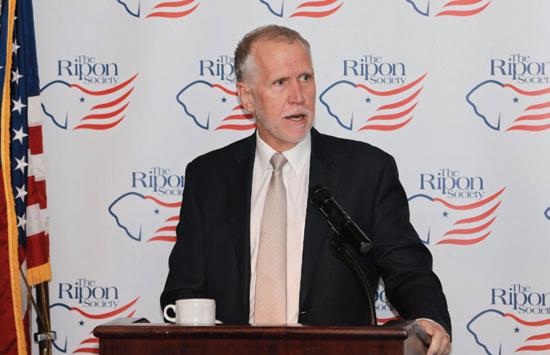
“ There were a half million encounters at the border in the last year of the Trump Administration,” Tillis stated. “There were three million encounters over the last 12 months. We have a crisis at the border, and we know that it’s manageable because we haven’t passed a law to change our border policy. We just have an Administration that took down constitutionally sound policy that managed the situation.
“ Incidentally, we had it manageable with a porous border. We need more work there, but we were managing it. The Border Control Council says that if they have a half million encounters a year, and they have border security deployed to the border — not babysitting, driving buses, or pushing paper — that is a manageable inflow. But now we have three million. We ’ll probably
have another three million. The border is a disaster.”
The Tar Heel State lawmaker was first elected to the U.S. Senate in 2014. Since coming to Congress, he has built a reputation as a commonsense conservative who is not afraid to work across
on this issue can be found.
According to Tillis, a solution must include not only stronger security along America’s southern border, but reform of our nation’s outdated immigration laws.
“ There’s no way to fix this unless you have both parts of the equation,” he stated. “So I’m doing now what I call missionary work. I’m going to get on my donkey, I’m going to ride it over to the House, and I’m going to see what the art of the possible is. I have got to see whether or not Members have the courage to step up and recognize they are smart people. They really understand that none of this can get done unless we bridge the gap.”
the aisle to solve some of the most pressing challenges facing our country. One of those challenges is border security and immigration reform. He visited the border earlier this year with a bipartisan group of eight Senators, who also held roundtable discussions in Texas and Arizona to further examine where common ground
The Ripon Society is a public policy organization that was founded in 1962 and takes its name from the town where the Republican Party was born in 1854 – Ripon, Wisconsin. One of the main goals of The Ripon Society is to promote the ideas and principles that have made America great and contributed to the GOP’s success. These ideas include keeping our nation secure, keeping taxes low and having a federal government that is smaller, smarter and more accountable to the people.
“There’s no way to fix this unless you have both parts of the equation.”
Thom Tillis
PepsiCo is deeply committed to hiring veterans and active duty reservists as well as spouses and family members. We are proud to support the Ripon Forum and through programs like our annual Rolling Remembrance fundraiser supporting Fallen Patriots, we are engaged in building a culture that supports the needs of Veterans and military families. https://www.pepsicojobs.com/military/

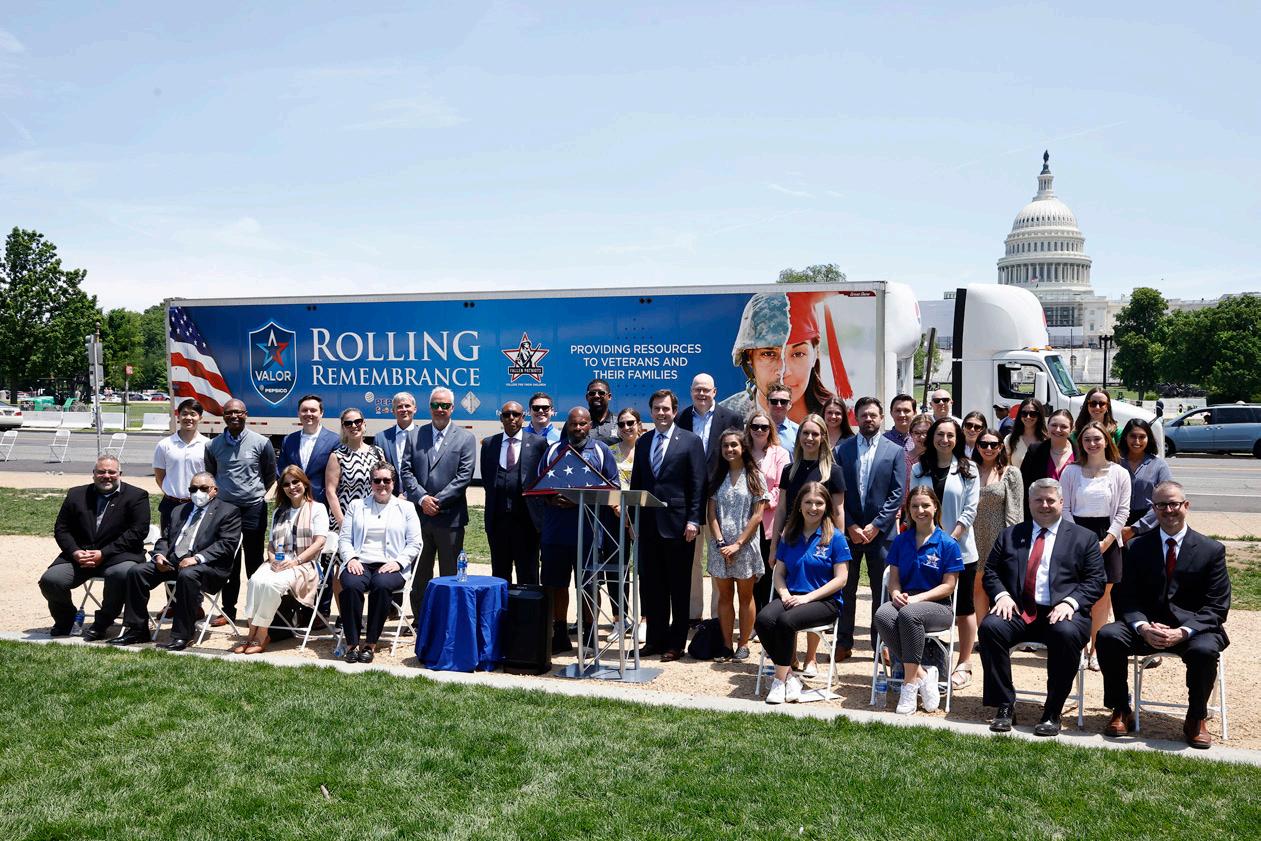
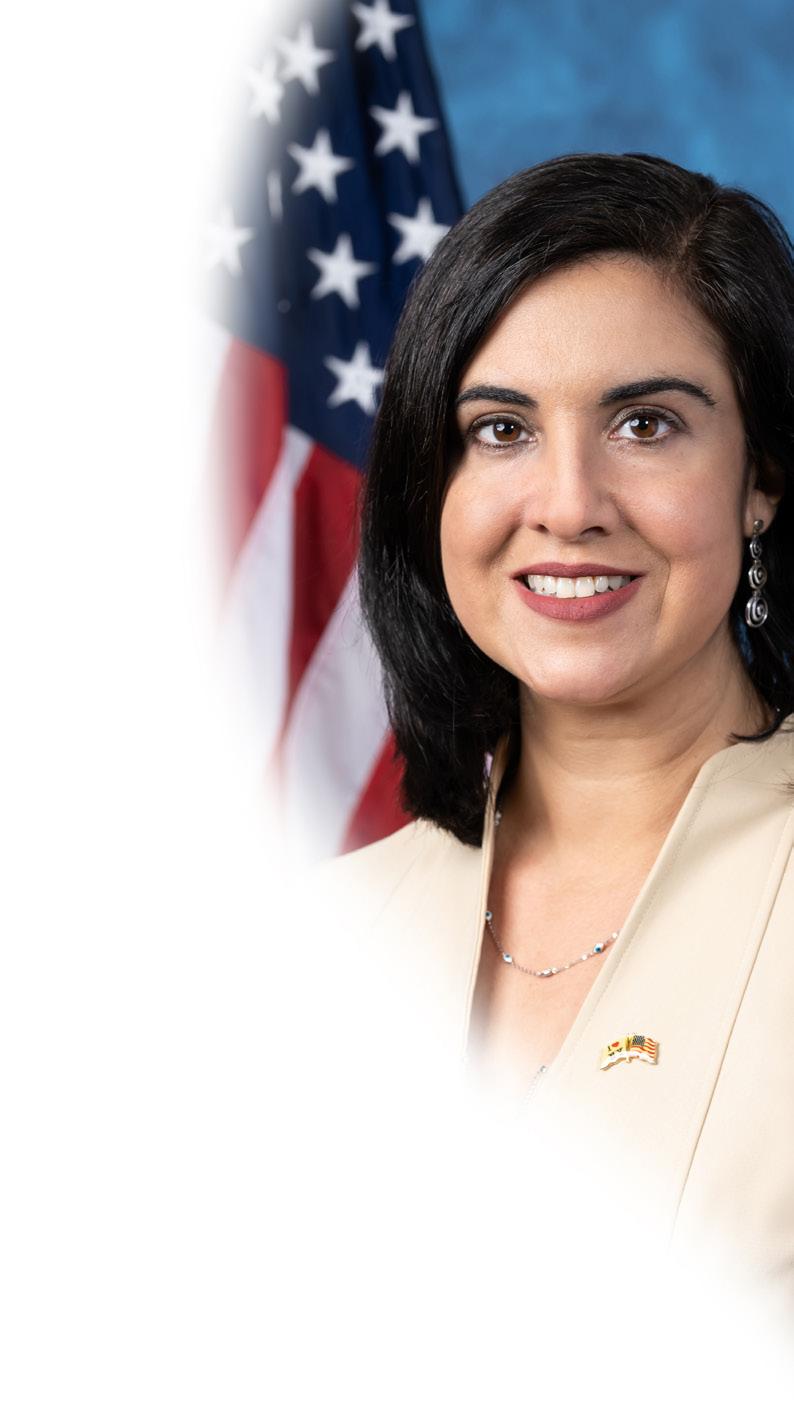
Occupation: Representative for New York’s 11th Congressional District (Staten Island, Southern Brooklyn).
How has being the daughter of two immigrants shaped your view of public service and career on Capitol Hill? From a young age, my parents instilled in me the value of hard work and a great appreciation for the freedom and opportunity our country has to offer. My father is from Greece, and my mother is a Cuban exile of the Castro dictatorship. Both of them came to this country with little to nothing; they didn’t ask for government handouts and worked several jobs to support our family. Now, their daughter is a member of the U.S. Congress. Their stories are a constant reminder to me to support policies that promote freedom, opportunity, and economic prosperity to preserve that same American Dream for future generations.
You are the lone Republican representing a portion of New York City. What is the biggest issue facing your community and how do you plan to address it in Congress? Crime is by far the biggest issue facing our city because of lax bail reform policies passed at the state level that have created a revolving-door criminal justice system, exhausted police resources, and have allowed repeat offenders to get off Scot-free. Additionally, we have District Attorneys who act more like Defense Attorneys by refusing to prosecute certain crimes, downgrading felony charges filed by police, and no longer seeking sentences of life without parole.
On top of urging Governor Kathy Hochul to repeal these
soft-on-crime policies, I’ve introduced several pieces of legislation to crack down on this issue, including H.R.7967, the Prosecutors Need to Prosecute Act, which would create transparency by requiring District Attorneys to report the number of violent crimes they decline to prosecute, the number of offenses committed by career criminals and the number of criminals released, so the public has the information they need to make informed decisions at the ballot box.
What’s been the toughest vote you have cast, and how did you explain it to your constituents back home? The toughest vote I’ve cast in Congress has been for the bipartisan Infrastructure Investment and Jobs Act, only because of the national criticism I along with twelve of my colleagues received for crossing party lines (the vote was actually quite popular back home). Quite frankly, as someone who represents an urban district with aging infrastructure, supporting this legislation was a no-brainer.
For far too long, local, state, and federal leaders neglected to modernize New York City’s aging infrastructure to keep pace with economic and population growth. The funding stream provided through this legislation is already being used across the state and in my district specifically to modernize our roads, highways, and bridges, including $5 million to upgrade Coast Guard Housing and $48 million for a dredging project which will make way for an offshore wind staging and assembly facility off the coast of Staten Island. Additionally, New York State has received more than $128 million to retrofit its ports and waterways which directly impacts the maritime industry in my district by creating good-paying job opportunities in the community.
How is your chihuahua, Peanut, handling the back-and-forth between home and the Capitol? Unfortunately given Peanut’s age and my busy schedule, he is in foster care (living with my parents) when I’m in Washington. He turned 18 this year, but his old age doesn’t stop him from coming to district events and meeting constituents with me when I’m home!
























